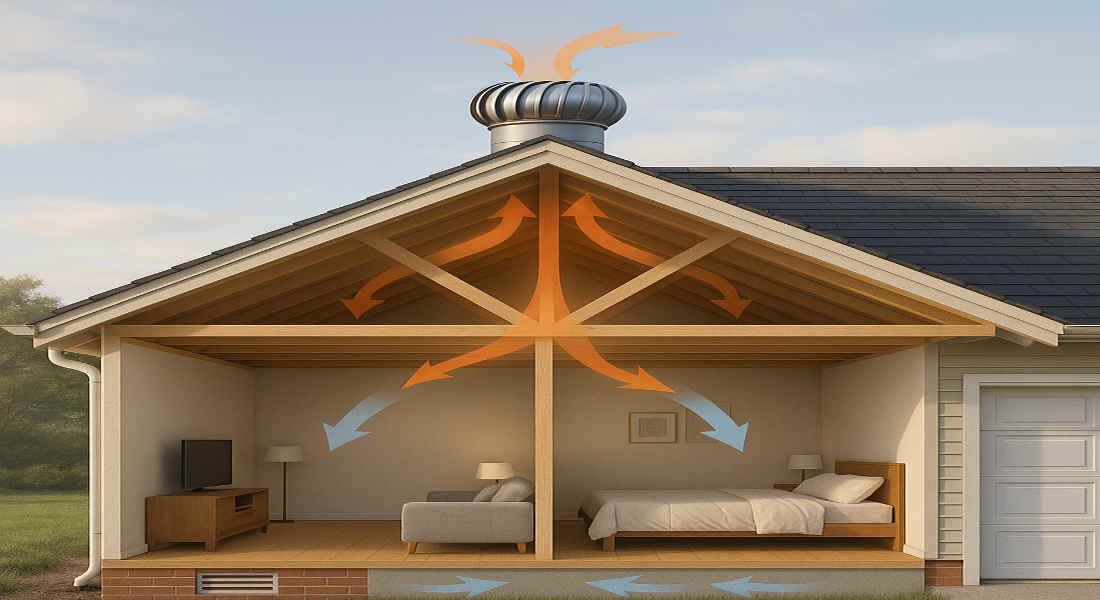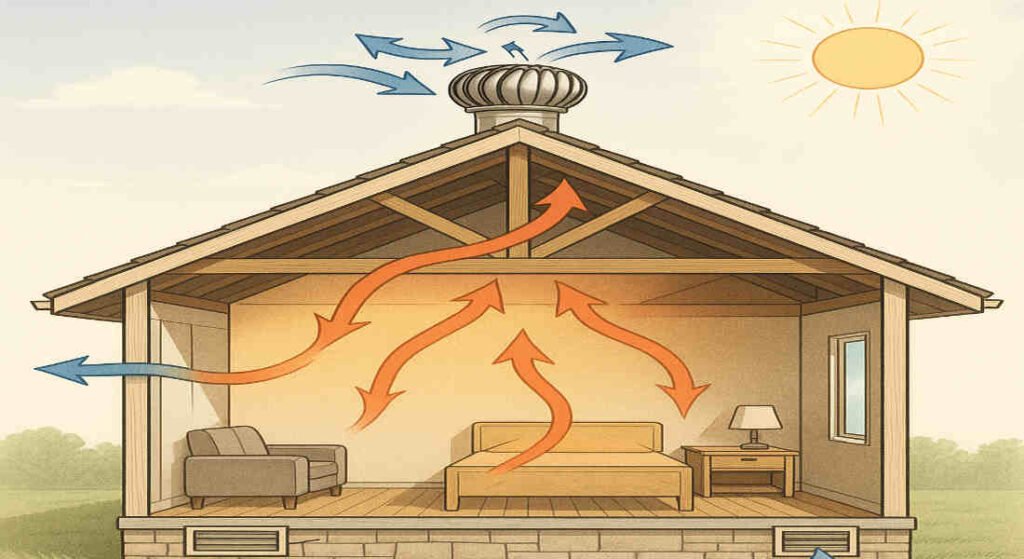When summer temperatures soar, keeping your home cool becomes a top priority for many homeowners. One popular solution often recommended is the installation of roof turbines—also known as whirlybirds or turbine roof vents. These distinctive, wind-powered devices are designed to enhance attic ventilation by drawing hot, stale air out of your roof space and allowing cooler air to enter, all without the need for electricity. But do roof turbines help cool your house, or are their benefits overstated?
The science behind how roof turbines work
Roof turbines operate on a simple yet effective principle of ventilation. As the wind blows, it creates a pressure difference around the turbine. This pressure differential draws hot air out of your attic or upper living spaces.
The turbines are designed with blades that efficiently catch the wind. When these blades spin, they enhance airflow significantly compared to static vents. The result? A cooler environment as stale air escapes and is replaced by fresher outside air.
This natural cooling process is most effective when temperatures rise during the summer months. It also helps lower indoor humidity levels, improving overall comfort.
By facilitating better airflow throughout your home, roof turbines can play a crucial role in maintaining a balanced temperature without relying solely on electric fans or air conditioning systems.
Benefits of using roof turbines for cooling
Roof turbines offer several benefits that can enhance your home’s comfort and energy efficiency. One of the primary advantages is improved ventilation. As they spin, they create a vacuum effect, drawing hot air out and allowing cooler air to enter from outside.
This process reduces indoor temperatures during those sweltering summer months. With improved airflow, you may find a reduced reliance on air conditioning systems, resulting in lower energy bills.
By expelling stale, warm air, roof turbines help maintain a more balanced indoor environment. This can prevent mold growth and improve overall air quality.
They rely solely on wind power for functionality—an eco-friendly choice for environmentally conscious homeowners who seek to cool their spaces naturally.
You may also read (does spraying your roof with water really cool your house).
Potential drawbacks of roof turbines
While roof turbines can be beneficial, they do come with potential drawbacks. One significant concern is noise. Depending on the design and installation, these turbines may produce unwanted sounds that could disrupt your peace at home.
Roof turbines require regular upkeep to ensure optimal performance. If neglected, they can deteriorate or even become a source of leaks in your roofing system.
In regions with minimal airflow, you might not notice a substantial change in indoor temperatures.
Improper installation could lead to decreased efficiency or damage to your roof structure over time. These considerations are crucial for homeowners considering the addition of roof turbines as part of their cooling strategy.
Factors to consider before installing roof turbines
Before installing roof turbines, it’s essential to assess your home’s ventilation needs. Each home is unique, and understanding how air flows in your space can help determine if turbines will be effective.
Consider the local climate as well. In areas with high humidity or heavy rainfall, roof turbines might not perform optimally. They could even introduce moisture issues if not installed correctly.
The condition of your roof also matters. Ensure there are no existing leaks or structural concerns that could complicate installation.
Think about noise levels, too. While many roof turbines operate quietly, some models may produce sound that could disrupt the peacefulness of your living environment.
Check for any building codes or regulations in your area that pertain to the installation of turbines. Compliance is crucial to avoid potential fines or complications down the line.
You may also read (how can i temporarily stop a roof leak in my home).
Other alternatives for cooling your house
When exploring ways to cool your house, roof turbines are just one option among many. There are several alternatives worth considering that may better suit your needs.
Ceiling fans can provide a refreshing breeze and help circulate air throughout the home, making it feel cooler without significantly increasing energy bills. They’re also easy to install and come in various styles to match your decor.
Air conditioning units provide controlled cooling on sweltering summer days. While they consume more energy than other methods, their effectiveness in lowering indoor temperatures is hard to beat.
Properly insulated attics and walls can keep hot air out during the summer months and maintain comfortable temperatures throughout the year.
Solar attic fans represent a sustainable cooling solution that utilizes solar power to ventilate hot air from attics, thereby reducing heat buildup without relying on electricity.
Consider landscaping strategies, such as planting trees or installing awnings that provide shade over windows and outdoor spaces, to naturally lower indoor temperatures while enhancing curb appeal.
Each of these options has its benefits and drawbacks. Assessing what works best for you will help you achieve a comfortably cool living environment.
You may also read (secure your home install a permanent roof anchor).

